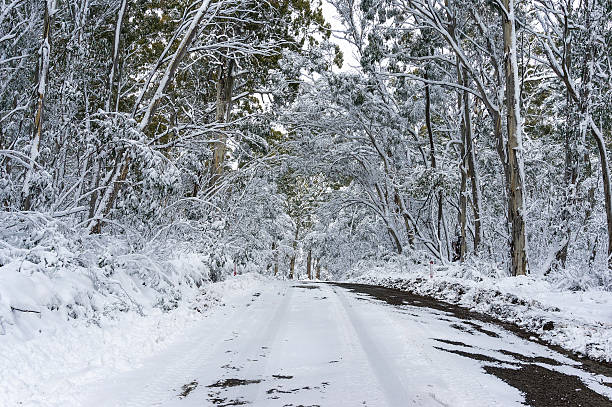Find Secluded Destinations for Snow In Australia Adventures
Find Secluded Destinations for Snow In Australia Adventures
Blog Article
Discover the Interesting Effects of Snow in Australia on Local Ecosystems
Regardless of its track record for sun-soaked landscapes, Australia likewise boasts areas blanketed by snow-- a phenomenon that exceptionally affects the country's special environments. The insulating homes of snowflakes protect plants and fauna in the middle of the coldest winters months, while the melting snow nurtures rivers and aquatic life. The actual marvel lies in just how these chilly problems form the country's biodiversity and nutrient cycles. As we unwind this intricate partnership, we find ourselves stepping on untouched grounds in Australia's high country.
The Unforeseen Areas of Snowfall in Australia
Although Australia is commonly linked with sun-scorched landscapes and sandy coastlines, specific areas remarkably experience snowfall. The high nation regions of New South Wales, Victoria, and Tasmania are especially recognized for their wintertime snow. The Snowy Mountains in NSW, for circumstances, obtain abundant seasonal snow, providing a raw comparison to the nation's common hot, arid climate. The Victorian Alps and parts of Tasmania also see yearly snowfalls, transforming the landscape right into a winter wonderland. These areas are not just anomalies but integral parts of Australia's varied climate system. The visibility of snow in these regions substantially influences local ecological communities, consequently impacting the country's special biodiversity. The specific influence on Australia's unique flora will certainly be gone over in the next area.

How Snow Impacts Australia's Unique Vegetation
While it might seem unusual, snowfall in Australia plays an important role in shaping the nation's special flora. The snow-filled winters foster strength in Australian plant types. This is specifically noticeable in the towering and sub-alpine areas, where snow gums and hill plum-pines flourish. These plants have developed to survive in severe conditions, with snow working as a protective blanket from freezing temperature levels and harsh winds. The snow additionally adds to the dampness web content of the soil, providing needed hydration for plant life throughout the dry summer months. Basically, the snow affects the timing of flowering and seed dispersal, the development prices, and the survival of lots of plant species, showcasing the detailed interaction between environment and flora in Australia.

The Adaptations of Australian Fauna to Snowfall
Just as Australia's plants has actually adjusted to the wintery problems, the local fauna as well, show amazing adjustments to the snowfall. It utilizes the snow as insulation, hibernating in rock gaps under the snow to remain warm. The Snow Skink, a types of lizard, alters its colour site web to white official source throughout winter, supplying camouflage against killers.
The Role of Snow fit Local Ecological Communities
In forming the neighborhood ecological communities, the duty of snow in Australia is both multilayered and extensive. It affects the distribution of plants and animals, greatly defining the biodiversity of towering and sub-alpine areas. Snow gives a critical water source, feeding rivers and tanks as it thaws, hence supporting a variety of aquatic life forms. Furthermore, snow acts as an insulator, safeguarding ground-dwelling microorganisms from severe cold. It plays a considerable role in soil development and nutrient biking. The regular cold and thawing of soil induced by snowfall cultivates the break down of rocks, boosting soil fertility. The presence of snow shapes the plant life patterns, animal actions, and total sustainability of Australia's distinct ecosystems.

The Future of Snowfall in Australia: Effects and forecasts

Provided the essential role snow plays fit local ecosystems, the future of snowfall in Australia is drawing raising attention from scientists and ecologists. Present climate versions anticipate a considerable decline in snowfall due to worldwide pop over to this site warming, with potentially extensive influence on regional communities. Less snow could lead to reduced water availability in alpine areas, negatively impacting wildlife habitats and plant. It could change the timing of seasonal adjustments, interfering with the life cycles of several indigenous varieties. The tourist market, greatly reliant on the winter snow season, may likewise deal with significant difficulties. Understanding these forecasts and their implications is crucial to develop reliable preservation approaches, making certain the conservation of Australia's one-of-a-kind biodiversity and the sustainability of its economic climate.
Final Thought
The function of snow in Australia's ecosystems is critical yet usually ignored. Therefore, the snow in Australia is extra than a natural spectacle; it's an essential gamer in the country's environmental narrative.
Regardless of its online reputation for sun-soaked landscapes, Australia also flaunts regions buried by snow-- a phenomenon that greatly influences the country's one-of-a-kind ecosystems. It uses the snow as insulation, hibernating in rock crevices under the snow to remain cozy - Does Australia Get Snow.In shaping the neighborhood ecological communities, the role of snow in Australia is both extensive and multilayered. The existence of snow forms the plants patterns, pet actions, and total sustainability of Australia's one-of-a-kind ecological communities
Given the critical role snow plays in forming neighborhood ecological communities, the future of snowfall in Australia is drawing increasing interest from ecologists and scientists.
Report this page